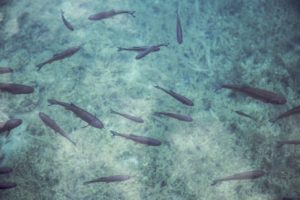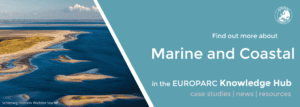NEW IUCN Global Ecosystem Typology
Landmannalaugar, Fjallabak Nature Reserve, Iceland by Joshua Sortino (Unsplash)
Last month the International Union for Conservation of Nature (IUCN) published its Global Typology of Ecosystems, a comprehensive system for classifying and mapping all ecosystems on Earth.
Our planet has an incredible wealth of ecosystems, all with specific traits and qualities. The new IUCN Global Ecosystem Typology sorts these ecosystems on both their functions and composition. It is the first standardised and spatially explicit ecosystem typology of its kind. IUCN Director General Dr Bruno Oberle hopes that it will provide the framework to effectively track goals that will arise out of the Post 2020 Global Biodiversity Strategy.
Through grouping ecosystems according to their characteristics and functions, it will be possible to find patterns that can help with the sustainable management of these systems worldwide.
By sharing research and management experiences about ecosystem functions, dependencies and responses to management, the typology can facilitate knowledge transfer that improves management outcomes for both biodiversity and ecosystem services.
How it works
108 major ecosystems are defined within the typology, both natural, wild ecosystems, but also those shaped by humans, like agricultural lands. The typology describes the processes that sustain them, as well as their global distributions. This will help to map out common risks that similar ecosystems face globally and what is needed to protect them. Additionally, it can assist identifying which types of ecosystems are most critical to biodiversity conservation and the supply of ecosystem services.
The system is hierarchical, containing 6 levels. The first 3 levels – Realm, Biome & Ecosystem Functional Group – represent the functional features of ecosystems and are explained in the report, the other 3 – biogeographic ecotypes, global ecosystem types and subglobal ecosystem types – represent compositional features and are often already in use and incorporated into policy infrastructure at national levels and can be linked to these upper levels.
The first level divides the ecosystems in 5 global realms:
- terrestrial;
- subterranean;
- freshwater (including saline water bodies on land);
- marine;
- the atmosphere.
At Level 2, the typology defines 25 biomes – components of a core or transitional realm united by one or a few common major ecological drivers that regulate major ecological functions.
Level 3 of the typology includes 108 Ecosystem Functional Groups that encompass related ecosystems within a biome that share common ecological drivers and dependencies, and thus exhibit merging biotic traits.
An interactive website
Additionally to the launch of the report, IUCN launched a fully interactive website. Here, users can discover all the different types of ecosystems and explore the ecosystem typology. Additionally, users can select a specific area to analyse functional groups and so identify, for example per country, which groups can be found where.
Apart from mapping out different ecosystems world wide and looking at their management, the system also aims to assist the System of Environmental-Economic Accounting (SEEA). This initiative of the United Nations sets out to measure the contribution of the environment to the economy through so-called ecosystem services, and the impact of the economy on the environment. The European Union also endeavors to take into account ecosystem services and nature’s contribution when assessing the economy.
The role of Local and Regional Authorities in protecting the marine environment
Source: Adobe Stock
The EUROPARC Federation, along with other stakeholders, has been invited to discuss challenges and opportunities related to protection of the marine environment at the subnational level. In this article, you will find a summary of the discussed points.
Subnational authorities protecting the marine environment
The European Committee of the Regions (CoR) is currently drafting an opinion on the role of Local and Regional Authorities in protecting the marine environment. The local and regional (subnational) dimension of the Marine Strategy Framework Directive hasn’t received enough attention yet.
Moving forward with this unexplored dimension could accelerate the ambitious task to tackle the challenges highlighted in the report on the first implementation cycle of the Marine Strategy Framework Directive, published by the European Commission in June 2020.
The challenges mentioned in the report are mainly connected with the CoR’s work on the European Green Deal, specifically its environmental component, which is strategic for the post-COVID-19 green and digital recovery. A recent report from the Court of Auditors also shows that biodiversity loss continues, and points to the possibility to increase the potential of EU funding for marine conservation objectives.

Sea floor with fish. Photo: Pixabay
The rapporteur for this opinion, Ms Emma NOHRÈN (SE/Greens) invited EUROPARC and other stakeholders to discuss the most important challenges and opportunities at the subnational level, related to protection of the marine environment.
During the debate, EUROPARC stressed the role of marine Protected Areas, and underlined the following points:
- The importance to recognize the role of Marine Protected Areas in the local plans for marine environment protection and local development.
- The necessity to guarantee adequate political attention, budget, human resources and skills to the Marine Protected Areas, not only to achieve the 30% target planned in the new EU Biodiversity Strategy, but especially to reach a good and efficient management.
- The importance of coordination between local, regional and national authorities in charge of marine topics.
- At each level, the importance of coordination between the different authorities in charge of environment, fishery, transport, but also of defense (Navy) if pertinent at the regional level, and so on.
- The need of coherence of policies in the land and in the sea, because what happens in the land (for example agricultural practices) has a decisive impact on the sea. Therefore, a coordination with Farm to Fork Strategy (also but not only for the sea food) and CAP, is essential.
- If in charge of a Marine Protected Area, the local authority has to guarantee adequate attention and priority to the Marine Area in relation to its different policies and responsibilities.
- In all cases, even if not directly involved in the management of Marine Protected Areas, local and regional authorities are crucial in establishing good and long-term relation with local communities and stakeholders, as fishermen and tourism business.
- In order to guarantee involvement of the private sector, for example, the local and regional authorities have to take clear and long term political decisions. These decisions should result in a stable framework for the private sector to decide how and when to make investments and in which direction they should drive their enterprises.
- Partnerships with local stakeholders can be supported by local authorities, with focus on dialogue and implementation of win-win solutions. For example, local and regional authorities can provide specific recognitions to fishermen that work in a sustainable way and in cooperation with the Marine Protected Areas. The same can be done for the tourism business (EUROPARC promotes for example the Charter for Sustainable Tourism in Protected areas, that awards Protected Areas and their private partners).
Find more information about the event here!
The Draft Opinion (pre-vote) in all EU languages is available here. At the same link, from May 25th, it will be possible to download in all EU languages the final version (post-vote in CoR Plenary) of the Opinion, which will provide the formal position of the CoR on marine protection by subnational authorities.
